Slovenian armored personnel carriers LKOV Valuk for Ukraine
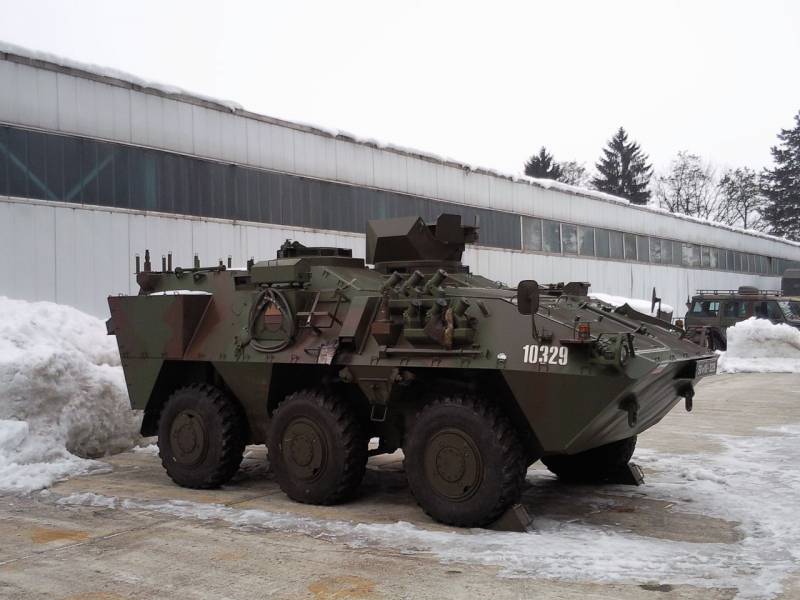
BTR LKOV Valuk Slovenian production
The other day it became known that Slovenia handed over to the Kyiv regime another batch of armored vehicles from the presence of its own army. This time, two dozen LKOV Valuk wheeled armored personnel carriers were removed from service and sent abroad. Such equipment has already arrived in Ukraine, and local formations are engaged in its development. In the foreseeable future, it can be used in a publicized counteroffensive, but the results of such use are already in serious doubt.
In secrecy
Despite the limited opportunities, Slovenia is trying to help the Kyiv regime and transfers various weapons, equipment and other property to it. Over the past year, almost three dozen medium tanks M-55S, 35 M-80A infantry fighting vehicles, 16 M2A1 howitzers, as well as vehicles, infantry weapons, etc.
The next episode of military-technical assistance became known from the Slovenian publication 24ur.com. According to him, LKOV Valuk armored personnel carriers, a local licensed version of the Austrian Pandur I vehicle, were sent to Ukraine. A batch of 20 vehicles hit Ukrainian territory a few days earlier.
It is alleged that the transfer of equipment was being prepared over the past few months. The Slovenian army selected the vehicles to send, repaired them and carried out the necessary preparations. Then the equipment was sent by air to Poland or Slovakia. The transportation was carried out by C-17 military transport aircraft involved in the joint NATO Strategic Airlift Capability program. An armored personnel carrier was delivered to Ukraine by land.
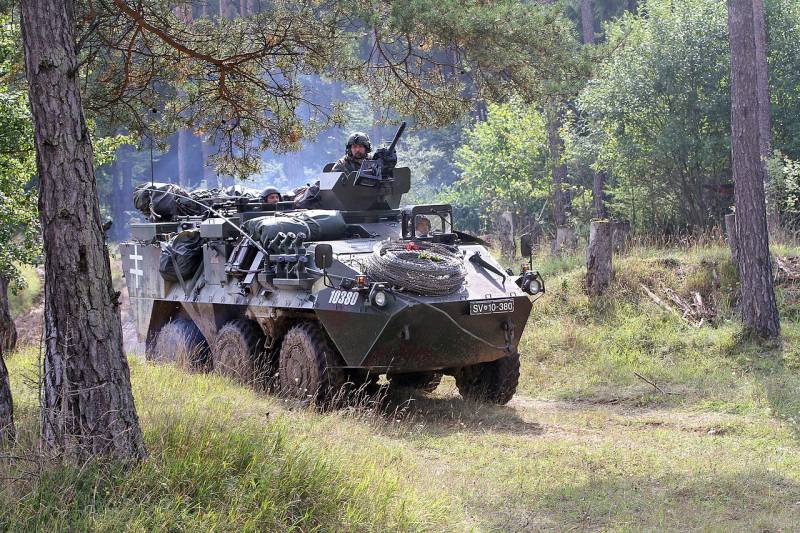
It is obvious that the transferred equipment is now being distributed among Ukrainian formations, and it will only be enough for a few units. The process of mastering its operation also begins. Soon we can expect the appearance of Slovenian armored vehicles in the combat zone. Probably, they will try to use Valuk in the long-promised counteroffensive. However, when this will happen and in what sector of the front is unknown.
Licensed production
The Slovenian armored personnel carrier LKOV Valuk cannot be called a new or modern vehicle. History of this product dates back to the eighties, when the Austrian company Steyr-Daimler-Puch Spezialfahrzeuge, on its own initiative, began to develop a promising wheeled armored personnel carrier. The project was named Pandur I.
The development and testing of the new armored personnel carrier was completed in the mid-nineties, and in 1996 it entered service with Austria. In the future, several foreign countries became interested in this machine, incl. Slovenia. In the late nineties, the Slovenian army acquired 13 Austrian-assembled armored personnel carriers for development and study.
The Pandur I armored personnel carriers showed good results, and soon the two countries agreed on the organization of licensed production. In 1999, the Slovenian plant STO assembled the first machines of this type and shipped them to the army. The agreements provided for the production of 72 armored personnel carriers with some design changes. The customer received the last batch in 2006.
The Pandur-1 entered service with Slovenia under the name Lahko kolesno oklepno vozilo (LKOV) Valuk (“Valuk Light Wheeled Armored Vehicle”). The car was named after Prince Valuk, in the XNUMXth century. who ruled the state of Carantania.
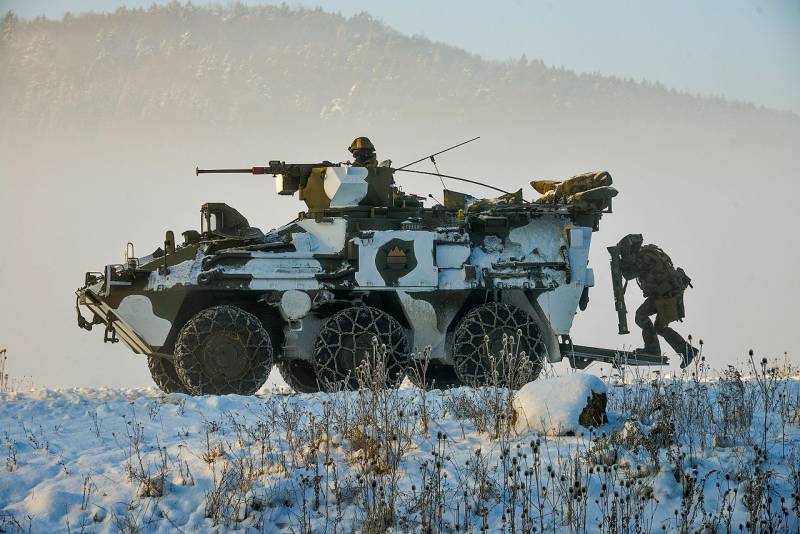
"Valuk" at NATO exercises. The folded ramp is visible
72 licensed armored personnel carriers entered service with two infantry regiments - the 10th from the 1st Infantry Brigade and the 20th Regiment of the 72nd Brigade. Due to the Valukov, it was possible to dramatically increase and improve the fleet of armored vehicles for the infantry. Prior to their appearance, the Slovenian army had only a limited number of Soviet and Yugoslav-style vehicles, obtained during the separation from the SFRY.
According to The Military Balance 2023, until recently, all Pandur I and LKOV Valuk purchased and assembled independently in the amount of 85 units. remained available and in use. Now the Slovenian leadership has decided to help the Kyiv regime at the expense of its own army. 20 armored personnel carriers were sent to Ukraine, and its own fleet, respectively, decreased to 65 units.
Outdated Skin
The Pandur I / Valuk armored personnel carrier was developed in the eighties and nineties in accordance with the current ideas and views of that time. As a result, it differs little from other samples of that period. This is a three-axle wheeled combat vehicle capable of carrying troops and supporting them with fire. With a length of approx. 5,7 m, the combat weight of the armored personnel carrier reaches 13,5 tons.
"Valuk" is built on the basis of a welded hull made of rolled armor. The frontal projection of the hull withstands shelling from 12,7-mm rifle systems. Other armor protects against rifle caliber bullets and shrapnel. Later, a set of mounted modules was developed, giving all-round protection against 12,7 mm bullets, but it was not widely used.
In the forward part of the hull there is a control compartment (on the left) and an engine compartment (at the starboard side). The central and aft parts of the vehicle accommodate the troop compartment.
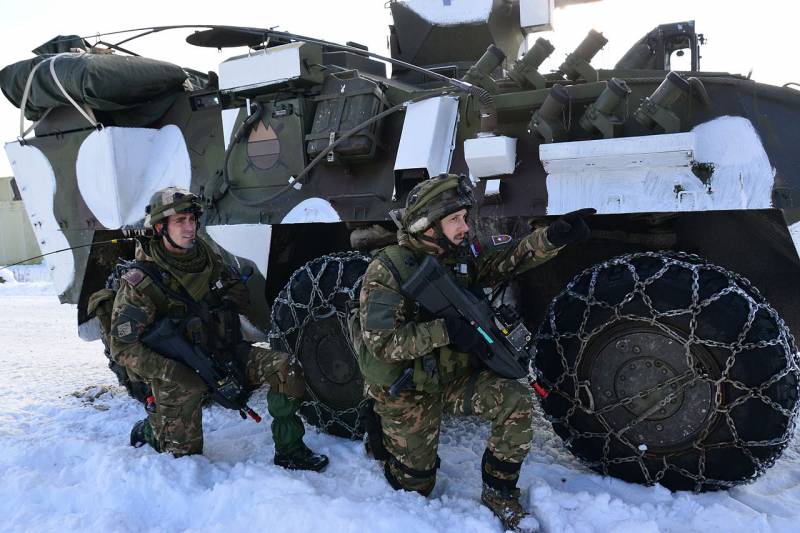
The armored personnel carriers are equipped with a Steyr WD 612.95 six-cylinder diesel engine with an HP 256 power. The engine is connected to an automatic transmission with a torque converter. The transmission delivers power to all six wheels. The chassis received an independent linkage suspension. Telescopic shock absorbers are used on the first and second axles, torsion bars are used on the third. Suspension elements are maximally covered by hull armor. A system of centralized inflation and tire pressure adjustment is provided.
With a specific power of more than 20 hp / t, the armored personnel carrier develops speed on the highway up to 100 km / h. Tanks for 247 liters of fuel give a cruising range of up to 700 km. The machine is able to move off-road and rough terrain. Water barriers are overcome only along the fords.
The own crew of the Valuk armored personnel carrier consists of two people - the driver and the gunner commander. The troop compartment has six places for fighters with weapons. Disembarkation is carried out through the aft ramp or through the upper hatches.
LKOV Valuk has only machine gun armament. Above the commander's seat, behind the driver at the left side, there is a turret open from above for a heavy machine gun. Also declared the possibility of installing weapons of other types - machine guns or grenade launchers.
Doubtful prospects
Over the past year, foreign countries have repeatedly donated armored vehicles to the Kyiv regime, and all such assistance has faced the same problems. New deliveries of Slovenian armored personnel carriers "Valuk", apparently, will not be an exception. This technique and its new owners will again face a number of objective difficulties and limitations that will lead to the most serious consequences.
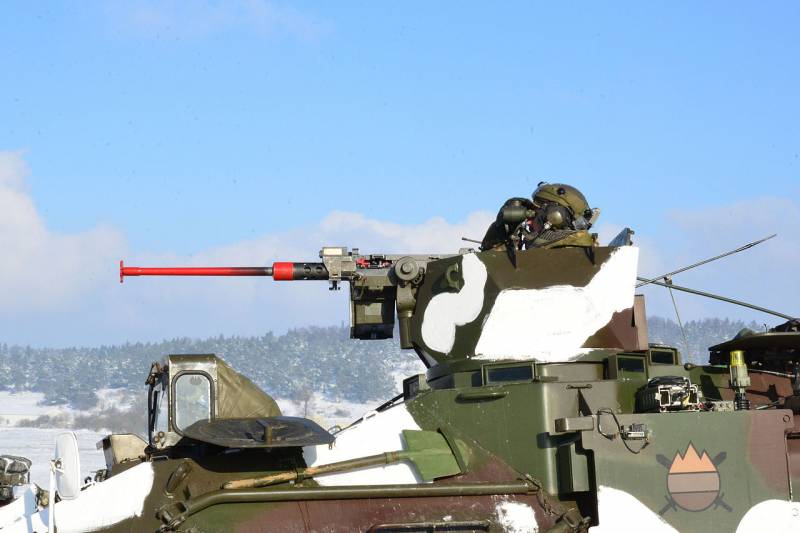
Machine gun mount with training weapon
As always, foreign partners provided a small amount of equipment. Two dozen armored personnel carriers will be enough to re-equip only a few platoons. Against the backdrop of the losses of Ukrainian formations, such assistance looks almost negligible. It should be noted that other equipment was also transferred to Kyiv, but the total indicators of all such assistance do not allow compensating for earlier losses. In addition, the presence of different types of equipment seriously complicates its joint operation, and also carries certain risks.
Quantitative problems are exacerbated by qualitative ones. Pandur I / Valuk was developed 30 years ago in accordance with the ideas of that time. To date, this armored personnel carrier is obsolete and does not meet current requirements. First of all, its reservation does not correspond to the conditions for future use. The frontal projection is protected only from large-caliber bullets, while the enemy, represented by the Russian army, has widespread 30-mm guns and other striking weapons. Valuk will be able to respond to such threats only with machine-gun fire.
For the Slovenian armored personnel carrier, high driving characteristics are declared. However, it has a wheeled chassis, and recent weeks have shown how difficult it can be to operate such equipment in off-road and mud conditions. Because of them, the mobility of the armored vehicle is reduced, and it becomes an easier target.
International problems
The current situation with the LKOV Valuk armored personnel carrier shows that European countries still have the opportunity to help the Kyiv regime and transfer weapons or armored vehicles to it. At the same time, not the newest and most perfect samples are used, and in limited quantities. The benefits of such “help” for Ukrainian formations are doubtful.
With all this, the equipment has to be removed from service with its own combat units. This leads to a deterioration in the already low performance of the army or armies. So, Slovenia last year gave Ukraine two-thirds of the available M-80A infantry fighting vehicles, and now it has shipped almost a quarter of the newer Valuks. How they are going to make up for such losses has not yet been reported.
Information